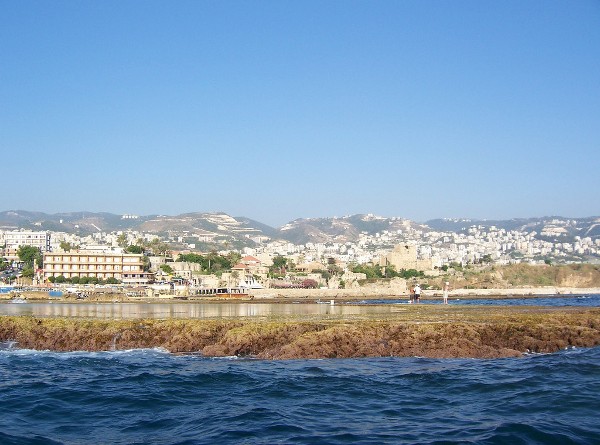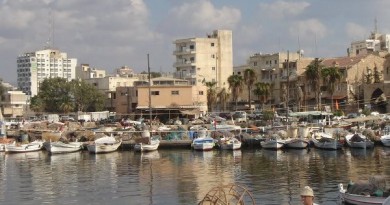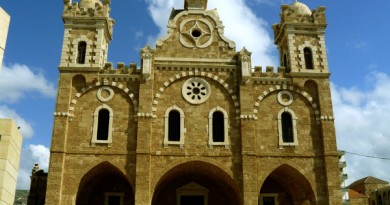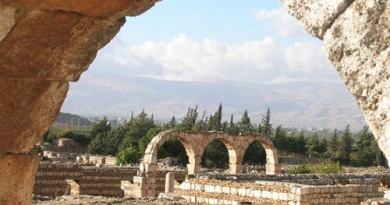Byblos in Lebanon
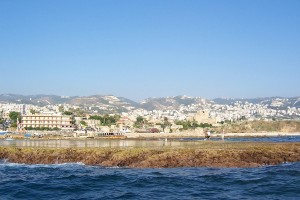 Byblos (city today is the Arabic name of Jbeil) – Lebanese ancient city located 37 km from Beirut. City, by law, claims to be the oldest city in the world and, according to historians, the ancient city of all permanently inhabited by people. It is the richest archaeological areas in Lebanon, the likes of which are not so much even in the world. See the legacy of centuries-old history of not only the city but also the country as a whole tend to tourists from all over the planet.
Byblos (city today is the Arabic name of Jbeil) – Lebanese ancient city located 37 km from Beirut. City, by law, claims to be the oldest city in the world and, according to historians, the ancient city of all permanently inhabited by people. It is the richest archaeological areas in Lebanon, the likes of which are not so much even in the world. See the legacy of centuries-old history of not only the city but also the country as a whole tend to tourists from all over the planet.
The exact year of foundation of Byblos is not set, because it is very difficult, but it is known that in the 3rd millennium BC, the city was a key religious and commercial center. A source of prosperity of local people, and therefore the city as a whole, has been trading in timber and olive oil. With the coming to power of the Mamluks, the Ottoman Empire and then, Byblos has lost its original meaning and became a simple fishing town. Byblos – the ancestral home of one of the world’s first alphabet, Phoenician, who came here in the 8th century BC.
Acquainted with the oldest sample of the alphabet can be today, it is presented at the Beirut National Museum, on the sarcophagus of King Ahimara. Phoenician alphabet was the forerunner of many existing today alphabets. It was born in Byblos script. The city include a very large number of legends and stories from ancient times and almost to the present.
Alternated century, the rulers, everyone brings something different to the city and Byblos continued to live and grow. At various times, the town belonged to the Babylonian and Assyrian kingdoms, to the Persians, who turned in Byblos outpost on the eastern shore of the Mediterranean Sea, the Roman Empire, the Byzantines, Mamluks, Crusaders, Arabs, Turks. Each era is represented in Byblos many historical and architectural monuments. Preserved in Byblos theater built 218 years before Christ, but then if it was placed at the entrance to the city, but now archaeologists have carried him to the sea.
When making the temple were used layouts porticos of ancient buildings. Survived five-row seats of the theater, just as they were 30. The theater is located near the royal tombs. They are interesting in that they dug in the rock, and quite deep. The sarcophagus of King Abi Shem most impressive of all its dimensions. Unknown deity temple – one of the oldest in the world. He is called so because the name of the deity to whom the temple is dedicated, is not established. Temple courtyard lined with many obelisks of different sizes, which survived the persecution of pagan symbols representatives of Christianity and Islam.
During the reign of Alexander the Great in the city built the Hellenic temples, sleek, which are then repeatedly rebuilt. An interesting sight of the Crusader – The Church of St. John, made in the Romanesque style. The first stone of the church was laid in 1115, but construction was completed almost a century. Fortified church in a special way to prevent the destruction in earthquakes and other natural disasters. This measure has been forced, since even before the completion of the church of St. John was heavily damaged by an earthquake in 1170. Architecture building is very interesting, and there are elements of the Roman style, and the eastern Byzantine and early Gothic.
In addition, the initial error of builders and architects, committed to the benchmark (some items are not available as usual to see them in churches), adds some zest to the building. Not far from the church is a garden where the remains of an earlier Byzantine church columns, mosaic floor. St. John’s Church has repeatedly been attacked and was quite badly damaged several times, but it was reduced to the same, sometimes added new elements, such as the bell tower. In southern Jbeil is another attraction of the same period – the Crusader fortress, built in the 12th century, according to the canons of construction of knights’ castles.
At the base of the tower are the most powerful units are times Phoenicia. If you go up the west tower of the castle, you can enjoy a splendid view of the ancient city. In the 19-20 centuries in one part of the territory of the ancient city of Byblos was located village. As a reminder of its existence until today live under house red roof. Village had to sacrifice for the sake of the excavation, but it is not needlessly sacrificed, because at this point found traces of early settlements, whose existence dates back to 4.5 thousand years before Christ.
Restored markets since the Middle Ages and today is one of the favorite places of tourists and locals alike, here you can find a lot: from the really essential things to all sorts of small trinkets, which can lead to gift friends and family with a trip to the eastern country or keep as a memento of wonderful holiday. Jbeil In addition to the above attractions there are many other, nor a drop of no less interesting, for example, the ruins of temples and Jebal Baalat-Temple-en-el, lush and interesting facilities built in the 3rd century BC. In various parts of the city and is now in the silver and gold coins of the period of the Roman Empire.
Romantics suggest a walk to the bay, where you can take a fascinating tour of the sea. With sea views of the ancient city of Byblos any special fascinating and impressive. At the entrance to the bay many watch towers built by the Crusaders, if you climb to them, offering stunning views of the city and bay. Port of Jbeil – also the oldest in Lebanon.
Every year in August and September in Jbeil under the patronage of the President of Lebanon, and the auspices of UNESCO international festival, which shows folk art from around the world. Also at the festival there are many interesting and exciting activities. So, if at this time you will be in Lebanon, then do not miss this event. You can also relax in one of the cafes or restaurants in Jbeil. Of particular interest is a restaurant-museum “Pepe”, it has an interesting design, but on the walls you can see photos of many celebrities that they have personally left, visiting the restaurant. Select Hotel in Jbeil large enough stop here sometimes not only tourists who come to visit the city, but those who come to Lebanon for, say in Beirut. To get to the capital from Jbeil is not a problem, and prices for hotel rooms below.
Jbeil is the city has retained a culture of many peoples and civilizations, the history of centuries and millennia. Hardly in any other city you will see so many historical monuments, the most fully reflects the heavy history of Lebanon and interesting architecture. Besides, Jbeil is rich in archeological mysteries, certainly there are still many unresolved remnants of settlements, churches, theaters, markets, and other things that have been preserved from ancient times, the Middle Ages to the present.
Modern Jbeil is no less interesting than the remains of the ancient Byblos. Visit Jbeil and you will definitely not regret it, as it will give you a lifetime of unforgettable experiences.

